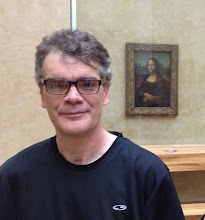 Residents of my town like many others are annoyed by two side effects of heavy rail traffic: traffic stops at grade crossigs, and loud train horn blasts. Grade crossings are those places where the train crosses the road at street level, and bells and lights and gates stop all traffic when the train passes. Besides being a frequent location for tragic accidents, grade crossings hold up ambulances and other emergency vehicles, which must wait along with everyone else for the train to pass.
Residents of my town like many others are annoyed by two side effects of heavy rail traffic: traffic stops at grade crossigs, and loud train horn blasts. Grade crossings are those places where the train crosses the road at street level, and bells and lights and gates stop all traffic when the train passes. Besides being a frequent location for tragic accidents, grade crossings hold up ambulances and other emergency vehicles, which must wait along with everyone else for the train to pass.Train horns are not as much of a safety issue. The horns in fact must be blown to provide for safety. But they are an annoyance, especially for those who live near the tracks, and especially when they are blown late at night.
The city of Reno, Nevada has implemented a great solution. The Reno Trench is a several-mile long rail artery right through the middle of town. Not quite a "subway tunnel", the Trench is covered with nothing but sky except at several bridges where streets cross at former grade crossings. Eliminating all grade crossings, the Trench allows Reno traffic to cross unhindered by the flow of rail traffic. Also, trains no longer need to blow their horns as much.
No doubt the Trench was an expensive construction project, and the city of Reno can afford it. But as other municipalties face growth and development nearer to rail rights of way, many of which put in place long ago before such development, they may want to consider a solution like the Reno Trench.
Amtrak passengers can get a look at the Trench when the train stops in Reno. The station has been remodeled to provide access to the lower level platform.



